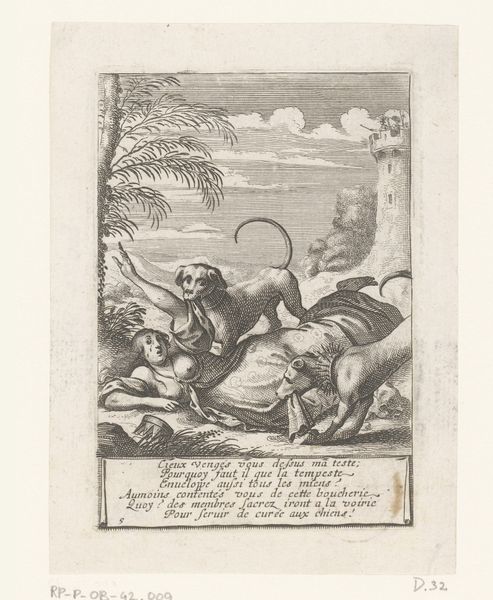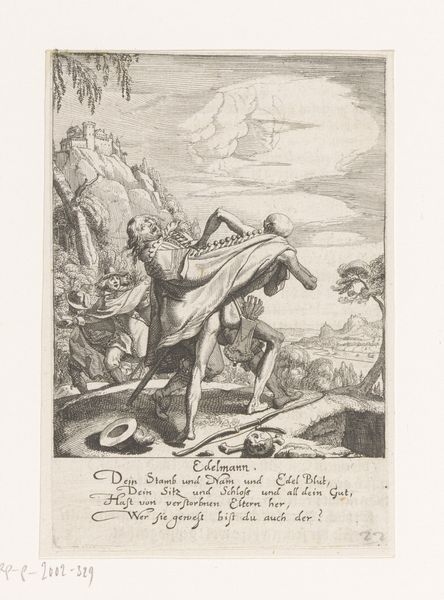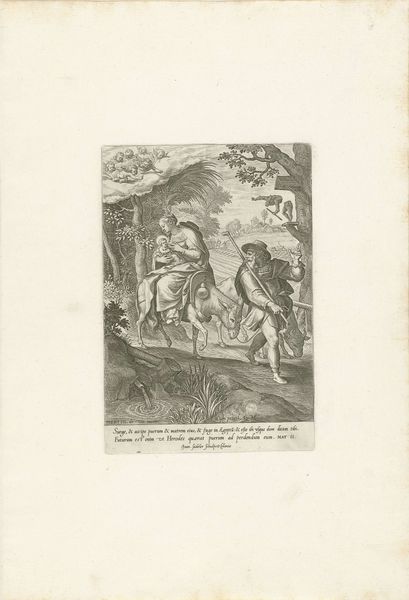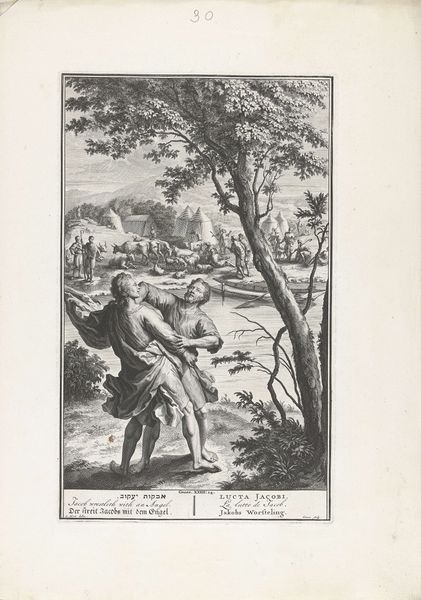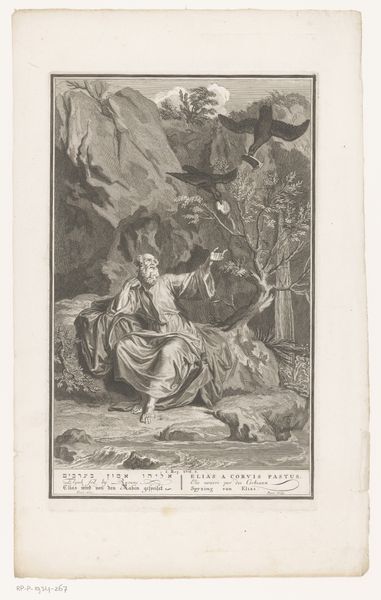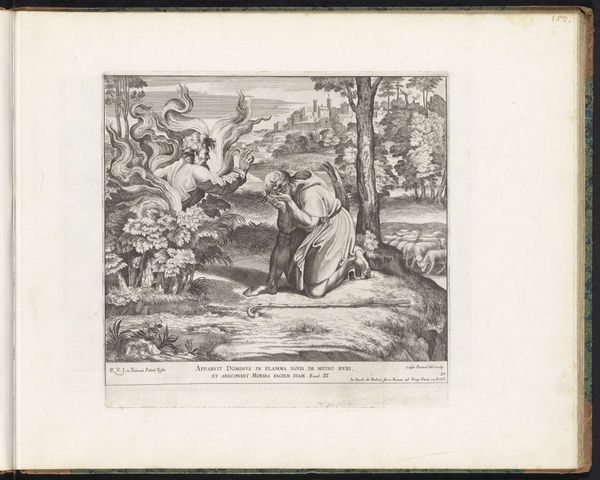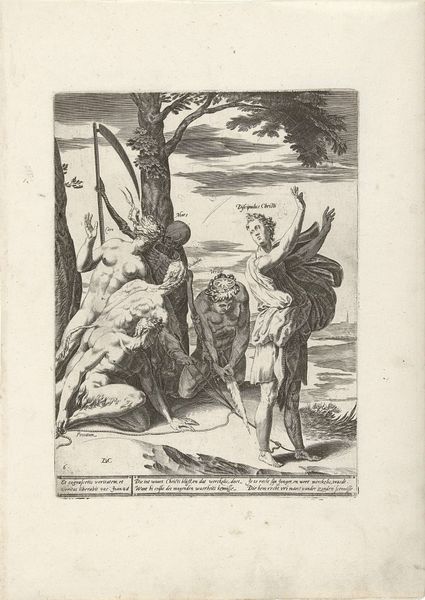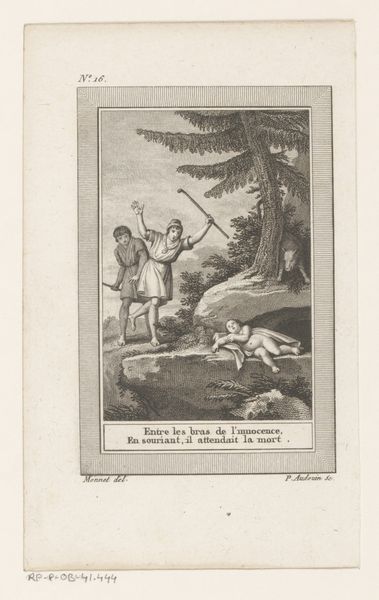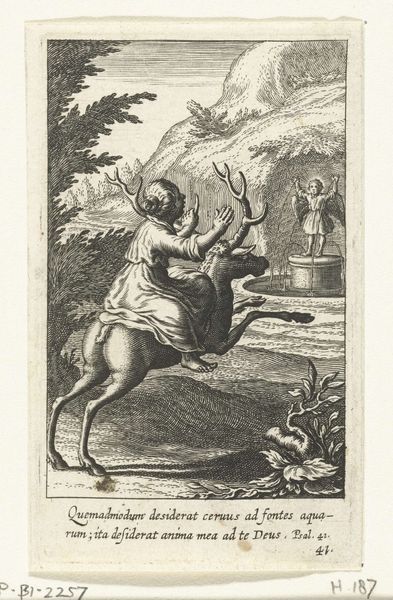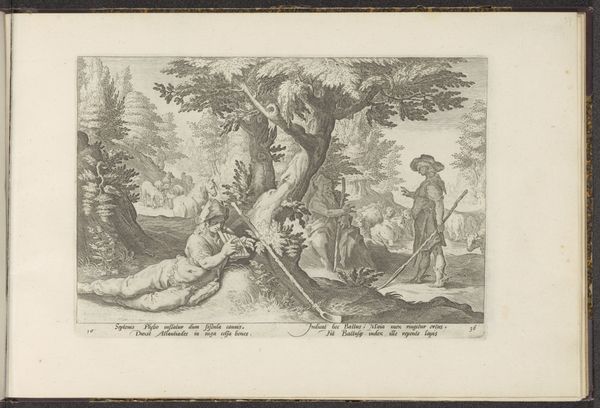
engraving
#
baroque
#
old engraving style
#
figuration
#
line
#
history-painting
#
engraving
Dimensions: height 117 mm, width 80 mm
Copyright: Rijks Museum: Open Domain
Editor: We are looking at “King Joram pierced by an arrow, Jezebel next to him,” an engraving made around 1635 by Abraham Bosse. The stark contrast created by the lines lends it a dramatic, almost theatrical feel. What strikes you most when you see this piece? Curator: It feels almost like a scene plucked from a play, doesn't it? The frozen gestures, the slightly exaggerated grief of Jezebel—it’s all very Baroque. But look closer. It is not just the drama; Bosse has etched this image with fine lines and crosshatching to create shadows that speak volumes. Think of what that means - Bosse is inviting us to think on these tiny little marks that coalesce and construct emotion, movement, a world in miniature. Did you notice how Jezebel is looking away? Editor: Now that you point it out, I do! Why do you think that is? Curator: Perhaps she's turning from the consequences of their reign. These weren't the best monarchs, and this isn't a pretty story; it is about divine retribution, and maybe, the artist shows the turning away is a kind of cowardice? It's interesting to consider Bosse's choices – what he includes, and more importantly, what he leaves out, right? Editor: I hadn't considered the act of leaving something out to be such a vital aspect! It's making me rethink how I view engravings altogether. Curator: Art is often as much about what's unseen as what’s blatantly there! This piece, for me, really whispers of those subtle power plays between morality and the canvas. Editor: Definitely something to consider when viewing artwork from now on. Thanks for the insight!
Comments
No comments
Be the first to comment and join the conversation on the ultimate creative platform.
